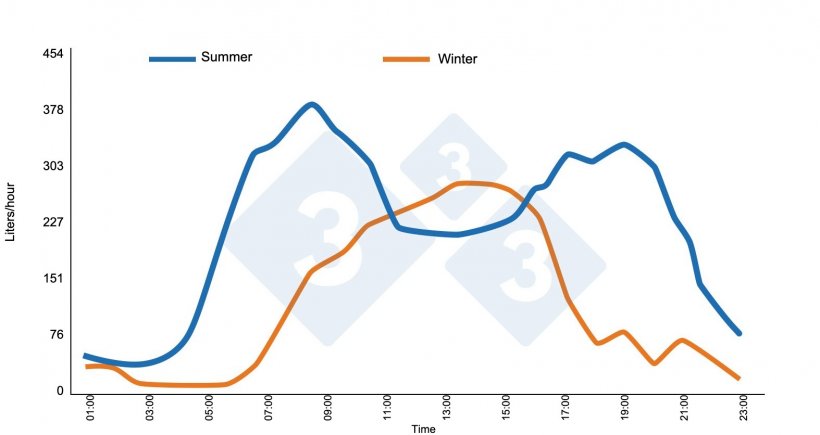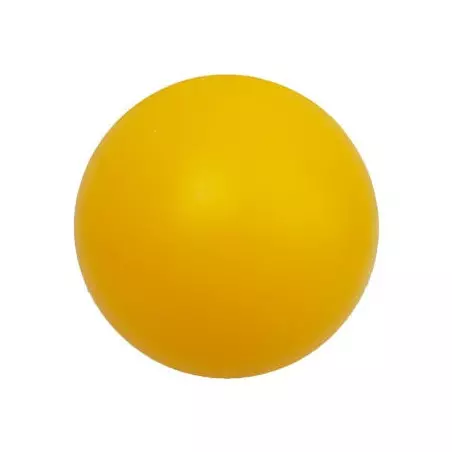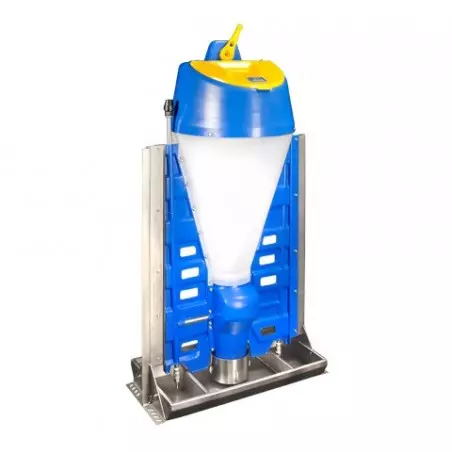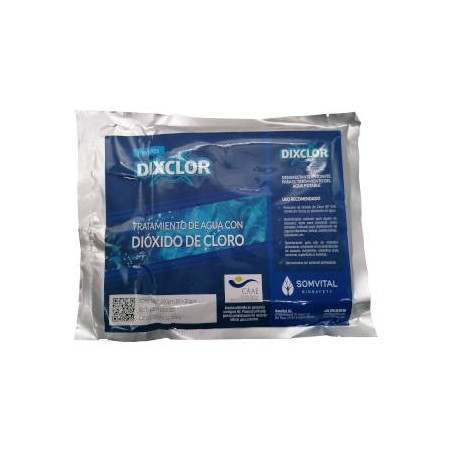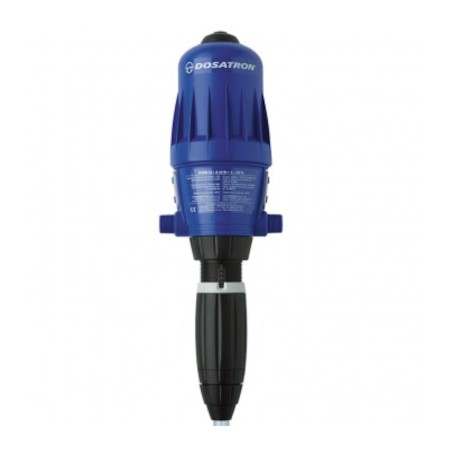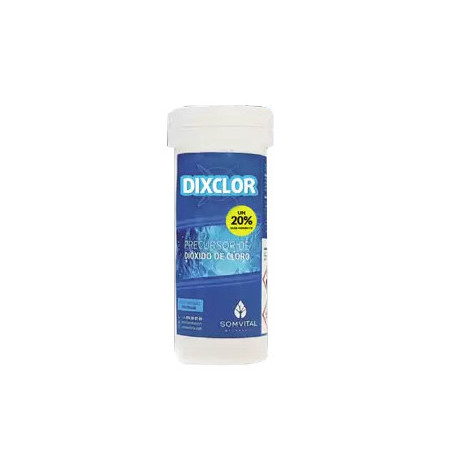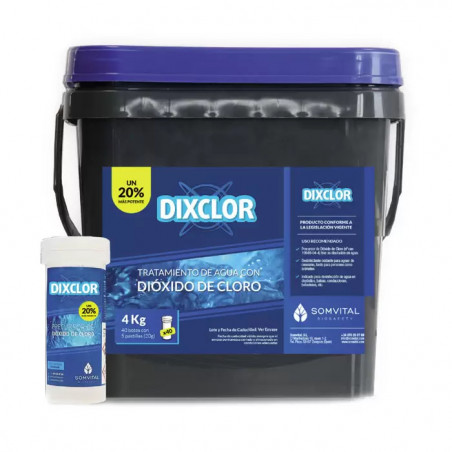Pigs mostly get water from drinking water (77-80%); the rest is metabolic water (16-19%) and humidity from feed (4%):
Graph 1. Obtaining water for three categories of pigs (liters / day). “Swine nutrition”. Lewis and Southern (2001).

| Pig, growth phase | Gestating sow | Lactating sow | |
|---|---|---|---|
| Drinking water | 6.5 | 11.50 | 17.50 |
| Water from feed | 0.31 | 0.24 | 0.84 |
| Metabolic water | 1.07 | 0.82 | 2.89 |
| Total water consumed | 7.88 | 12.56 | 21.23 |
Water needs have never been very well defined since there are many variable individual factors that are hard to determine.
Graph 2. Consumption estimates in different pig categories (l/day). Compilation of several authors.
| Authors | Type of pig or productive stage | ||||||
|---|---|---|---|---|---|---|---|
| Nursing piglets | Weaned piglets | Growing pigs | Finishing pigs | Gestating sows | Lactating sows | Boars | |
| Pederson (1984) | 1-2 | 1-5 | 5-10 | 5-10 | 12-20 | 25-35 | 8-10 |
| Lumb (1998) | 0.27 | 1.20 | 2.25 | 6.00 | 5-8 | 15-30 | - |
| Cleary (1983) | - | - | 3-7 | 7-12 | 12-15 | 18-23 | 12-15 |
| Anderson (1984) | - | 1.3-2.5 | 2.5-3.8 | 3.8-7.5 | 13-17 | 18-23 | 13-17 |
| Almond (1995) | - | 2.8 | 8-12 | 12-20 | 15-25 | 10-30 | 20 |
| Patience (2005) | - | 1-2.5 | 2.5-7 | - | - | 12-20 | - |
| Carroll (2003) | 1-2 | 1-5 | 8-12 | 12-20 | 12-25 | 10-35 | 8-20 |
| Bpex (2008) | - | 1-1.5 | 2-5 | 5-6 | 5-8 | 15-30 | 5-8 |
| Shannon (2008) | 1-2 | 1-5 | 5-10 | 10-20 | 12-20 | 20-60 | 10-20 |
| Taylor (2006) | - | 2-5 | 5-7 | 9-12 | 10-20 | 20-30 | - |
| Muirhead (1997) | - | 1-2.5 | 3.3 | 4.2 | 9-18 | 18-36 | - |
| Forcada(1997) | 1.2-1.5 | 2.25-2.5 | 3-5 | 6-8 | 5-8 | 10-30 | 5-8 |
| Taylor DJ (1995) | 0.3-0.5 | 1.5-2.0 | - | 6-12 | 10-20 | 25-40 | - |
Under conditions of thermoneutrality, drinking water needs are about 10% of live weight. However, consumption is typically overestimated than what is actually consumed by the pig due to water wastage due to environmental factors (temperature and % Relative Humidity - RH).
- With the rise in temperature, consumption increases
- With the rise in RH% consumption decreases.
When the temperature is very high, needs can increase by up to 15-75% and 3 or 4 times the water waste.
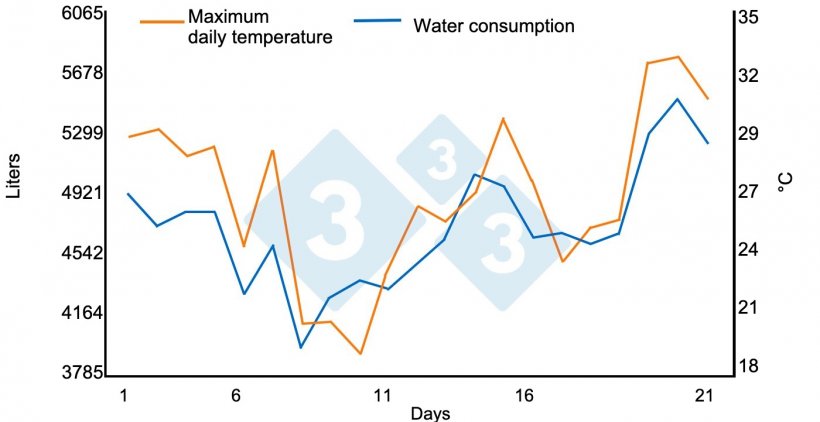
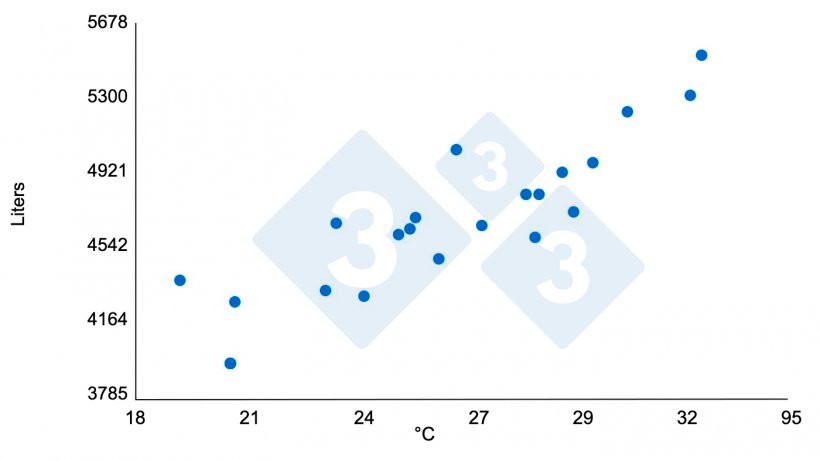
When we reference water from feed consumed we are talking about a dilution rate, this increases linearly with the temperature (RH between 65-70%):
Graph 3. Influence of room temperature on daily water consumption in the fattening phase. Massabie, Granier and Le Dividich (1996) Journées Rech. Porcine en France, 28,189-194.
| Dilution rate (liters of water:kg of feed) | Room temperature (ºC) | ||||
|---|---|---|---|---|---|
| 28 | 24 | 20 | 17 | ||
| Test 1 | Castrated males | 3.75 | 3.26 | 2.89 | 2.64 |
| Females | 3.65 | 3.21 | 2.50 | 2.15 | |
| Test 2 | Castrated males | 3.97 | 3.22 | 2.95 | 2.57 |
| Females | 3.90 | 3.31 | 2.85 | 2.72 | |
In this study, water consumption and the dilution rate increased (0.1/ºC) when the temperature increased from 17ºC to 28ºC. Upon decreasing the temperature from 28 ºC to 17ºC the ADG increased by 16% with a rise in consumption of 44 g/day/ºC and a growth rate decrease of (0.02/ºC).
A change in room temperature from 12-15 ºC to 30-35 ºC produces a >50% increment in consumption, but we must keep in mind that the increase in water consumption also depends on its temperature. At high room temperatures consumption will double if the water is chilled (10 ºC) as opposed to if it is hot (27 ºC). Regarding this, Roseworthy Pig Research Unit (Australia) found that an increase in water temperature (17.80 °C to 28.35 °C) reduced growth (378 g/d to 327 g/d).
Among other factors that can influence consumption is flow.
- With pigs exposed to chilled temperatures, a heavy flow was detrimental
- In pigs exposed to higher temperatures, a light flow was detrimental
Graph 4. Influence of the water flow and room temperature on the performance of pigs at 10-14 weeks old. Nienaber and Hahn,1984.
| Room temperature | ||||
|---|---|---|---|---|
| 4.5ºC | 35ºC | |||
| Water flow (ml/min) | 100 | 1100 | 100 | 1100 |
| Water consumption (L/day) | 3.26 | 4.62 | 3.13 | 10.83 |
| Feed consumption (Kg/day) | 2.24 | 2.18 | 0.74 | 1.09 |
| Average Daily Gain (g) | 855 | 730 | 278 | 466 |
| Feed conversion | 2.62 | 2.99 | 2.66 | 2.34 |
| Time dedicated to drinking (min./day) | 32.6 | 4.2 | 31.3 | 9.9 |
If we contemplate applying medications using drinking water as a vehicle we should be familiar with the environmental conditions in order to correctly estimate consumption and keep in mind that temperatures also affect pig behavior in relation to their daily pattern of water consumption. There are two consumption patterns based on room temperature:
- Thermoneutrality (temperatures <27 ºC): Drinking begins (5-6 a.m.), peaks at mid-day, and in the afternoon consumption reduces until nightfall.
- Heat (temperatures >27 ºC): two consumption peaks appear, between 8-9 a.m. and 5-8 p.m. Consumption drops at mid-day and at night.
